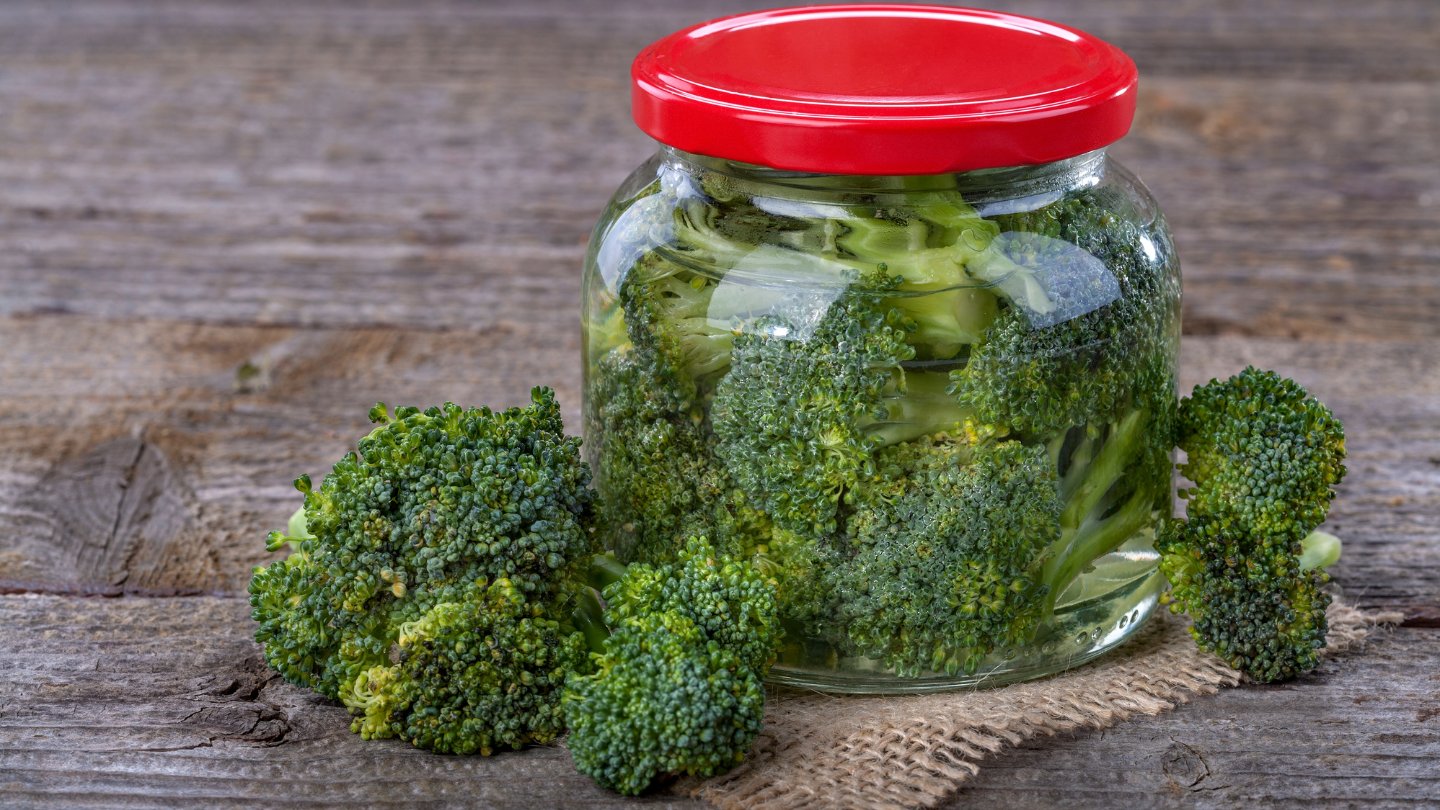

Articles
How To Store Broccoli In Mason Jars
Modified: August 23, 2024
Learn how to store broccoli in mason jars with this helpful articles. Keep your broccoli fresh and organized for longer shelf life.
(Many of the links in this article redirect to a specific reviewed product. Your purchase of these products through affiliate links helps to generate commission for Storables.com, at no extra cost. Learn more)
Introduction
When it comes to keeping your broccoli fresh and flavorful, mason jars are a versatile and efficient storage solution. These glass jars with airtight lids have become increasingly popular for various food preservation methods, and broccoli is no exception. Whether you have a surplus of fresh broccoli from your garden or you want to take advantage of a great sale at the grocery store, storing broccoli in mason jars can help prolong its shelf life and maintain its quality.
In this article, we will explore the benefits of using mason jars for storing broccoli and provide you with several methods to prepare and store your broccoli effectively. By following these tips, you can enjoy the nutritional benefits of broccoli all year round while reducing waste and saving money.
So, let’s dive in and discover the best ways to store broccoli in mason jars.
Key Takeaways:
- Mason jars offer a versatile and sustainable solution for storing broccoli, whether blanched, frozen, pickled, or dehydrated. Enjoy fresh, flavorful broccoli year-round while reducing waste and saving money.
- Create a convenient broccoli soup mix in mason jars for quick, homemade soup anytime. Experiment with different flavors and enjoy a comforting bowl of broccoli soup in minutes.
Read more: How To Store Mason Jars
Benefits of Mason Jars for Storing Broccoli
Mason jars offer several advantages when it comes to storing broccoli:
- Airtight Seal: Mason jars are designed with airtight lids that help to keep out air and moisture. This helps to preserve the freshness and flavor of the broccoli for a longer period.
- Transparent: The clear glass of mason jars allows you to easily see the contents inside. This makes it easier to monitor the condition of the broccoli and determine its freshness without needing to open the jar.
- Durable: Mason jars are made from sturdy glass that can withstand temperature changes and resist cracking. This makes them suitable for various storage methods, including freezing and canning.
- Reusable: Unlike plastic containers that may deteriorate over time, mason jars are reusable and can last for many years with proper care. This makes them a sustainable choice for storing broccoli and other foods.
- Portable: Mason jars come in various sizes and are easy to transport. You can take your broccoli stored in mason jars to work, picnics, or on-the-go without worrying about leaks or spills.
- Easy to Clean: Mason jars are dishwasher safe, making them convenient to clean and reuse. Just remove the lid and place the jar in the dishwasher for hassle-free cleaning.
Overall, mason jars provide a reliable and efficient way to store broccoli. By taking advantage of these benefits, you can enjoy the advantages of fresh and flavorful broccoli for an extended period.
Preparing Broccoli for Storage
Before storing broccoli in mason jars, it’s important to properly prepare it. Here are some steps to follow:
- Wash the broccoli: Start by washing the broccoli under running water to remove any dirt or debris. Make sure to remove any damaged or discolored portions.
- Trim the stems: Trim the tough stalks of the broccoli, leaving only the florets and a small portion of the stem. You can use a knife or your hands to break apart the florets into bite-sized pieces.
- Blanch the broccoli (optional): Blanching is a process of briefly boiling the broccoli, then quickly cooling it in ice water. Blanching helps to preserve the color, texture, and nutrients of the broccoli. However, it is an optional step and can be skipped if you prefer.
Once you have prepared the broccoli, you can proceed with your preferred method of storing it in mason jars. The following sections will cover various methods to store broccoli in mason jars, including blanching, freezing, pickling, dehydrating, and more. Choose the method that best suits your needs and preferences.
Method 1: Blanching Broccoli
Blanching broccoli before storing it in mason jars is a popular method that helps to maintain its color, texture, and nutritional value. Follow these steps to blanch broccoli:
- Boil a pot of water: Fill a large pot with water and bring it to a rolling boil.
- Prepare an ice bath: While the water is boiling, prepare a bowl or sink filled with ice water.
- Cut the broccoli into florets: Trim the broccoli into bite-sized florets.
- Blanch the broccoli: Submerge the florets into the boiling water for 2-3 minutes. This will partially cook the broccoli and help to preserve its vibrant green color.
- Cool the broccoli: Immediately transfer the blanched broccoli into the ice water bath to cool it down and stop the cooking process. Leave it in the ice water for 2-3 minutes.
- Drain and dry: Remove the broccoli from the ice water bath and drain off any excess water. Pat the florets dry using a kitchen towel or paper towels.
Once you have blanched and dried the broccoli, it is ready to be stored in mason jars. Make sure to use clean and dry mason jars with airtight lids to ensure maximum freshness and longevity. Fill the jars with the blanched broccoli, leaving some headspace at the top.
Label the jars with the date of storage and place them in the refrigerator. Blanching the broccoli before storage will help it retain its color and crispness for a longer period. You can now enjoy cooked or raw blanched broccoli in a variety of dishes whenever you desire.
Note: If you prefer to store your broccoli without blanching, you can skip the blanching step and proceed directly to storing the raw florets in mason jars. However, keep in mind that the color and texture of the broccoli may deteriorate more quickly without blanching.
Method 2: Freezing Broccoli
Freezing broccoli is a convenient way to preserve its freshness and nutritional value for an extended period. Here’s how you can freeze broccoli using mason jars:
- Prepare the broccoli: Wash the broccoli under running water and trim it into bite-sized florets. Remove any large stems or tough parts.
- Blanch the broccoli (optional): Blanching the broccoli before freezing is an optional step, but it can help preserve the color and texture. Submerge the florets in boiling water for 2-3 minutes, then transfer them to an ice bath to cool rapidly.
- Drain and dry: If you blanched the broccoli, make sure to drain it well and pat it dry to remove excess moisture. This will help prevent ice crystals from forming and maintain the quality of the frozen broccoli.
- Fill the mason jars: Place the blanched and dried broccoli florets into clean and dry mason jars. Leave some headspace at the top to allow for expansion during freezing.
- Seal the jars: Ensure the lids are tightly sealed to create an airtight seal, which will prevent freezer burn. You can also place an additional layer of plastic wrap or aluminum foil over the jars before closing them for extra protection.
- Label and date: Use a marker or label to write the date on each jar. This will help you keep track of how long the broccoli has been in the freezer.
- Freeze the jars: Place the filled mason jars in the freezer, making sure they are kept upright and not tilted. Allow a few inches of space between each jar for air circulation.
Frozen broccoli can typically be stored for up to 6-8 months in the freezer. When you’re ready to use it, simply thaw the desired amount in the refrigerator overnight or use it directly in cooked dishes without thawing.
By freezing broccoli in mason jars, you can have a stockpile of this nutritious vegetable on hand throughout the year. It’s a great way to make the most of your fresh broccoli and reduce food waste.
Read more: How To Store Flour In Mason Jars
Method 3: Storing Broccoli in Oil
If you’re looking for a flavorful and versatile way to store broccoli for later use, storing it in oil is a great option. Storing broccoli in oil helps retain its freshness and can add a delicious taste to your dishes. Here’s how you can do it:
- Prepare the broccoli: Wash the broccoli thoroughly and cut it into small florets. Remove any tough stems or leaves.
- Blanch the broccoli: Blanch the broccoli by submerging the florets in boiling water for 2-3 minutes. This step helps to preserve the color and texture of the broccoli.
- Cool and dry: Transfer the blanched broccoli to an ice bath to cool it down quickly. Once cooled, remove it from the water and pat it dry with a kitchen towel or paper towels.
- Choose your oil: Select a high-quality oil of your choice, such as olive oil or avocado oil. Ensure that the oil is fresh and free from any additives or contaminants.
- Fill the mason jars: Place the blanched and dried broccoli into clean and dry mason jars, leaving some headspace at the top. Ensure the jars are completely dry to prevent any moisture from spoiling the broccoli.
- Add the oil: Pour the oil into the jars, covering the broccoli completely. Ensure that all the broccoli florets are submerged in the oil to prevent any air contact, which can lead to spoilage.
- Seal the jars: Secure the lids tightly to create an airtight seal. This will help maintain the freshness and quality of the broccoli. You can also use a layer of plastic wrap or aluminum foil over the jars before closing them for added protection.
- Label and date: Use a marker or label to write the date on each jar. This will allow you to keep track of the storage time.
- Store in a cool place: Place the jars in a cool, dark place, such as a pantry or cupboard. The oil acts as a preservative and helps prolong the shelf life of the broccoli.
When you’re ready to use the broccoli, simply remove the desired amount from the jar using clean utensils. The oil-infused broccoli can be used in various dishes, such as stir-fries, pasta, salads, or as a side dish.
By storing broccoli in oil, you not only extend its shelf life but also enhance its flavor and texture. It’s a convenient way to have ready-to-use broccoli on hand whenever you need it.
To store broccoli in mason jars, blanch the broccoli first, then pack it tightly into clean jars, leaving 1 inch of headspace. Seal the jars and store in the refrigerator for up to 2 weeks.
Method 4: Pickling Broccoli
Pickling broccoli is a delicious and tangy way to store it for longer periods. The pickling process imparts unique flavors and extends the shelf life of the broccoli. Here’s how you can pickle broccoli using mason jars:
- Prepare the broccoli: Wash the broccoli thoroughly and trim it into bite-sized florets. Discard any tough stems or leaves.
- Prepare the brine: In a saucepan, combine equal parts water and vinegar, such as white vinegar or apple cider vinegar. Add in pickling spices like dill seeds, mustard seeds, garlic cloves, and any other desired seasonings. Bring the brine to a boil, then remove it from the heat.
- Blanch the broccoli (optional): Blanching the broccoli before pickling is optional but can help preserve its color and texture. Submerge the florets in boiling water for 2-3 minutes, then transfer them to an ice bath to cool rapidly.
- Fill the mason jars: Pack the blanched or raw broccoli florets into clean and dry mason jars, leaving some headspace at the top.
- Add the brine: Pour the hot brine mixture over the broccoli in the jars, ensuring that the florets are fully covered. Leave about 1/2 inch of headspace to allow for expansion during the pickling process.
- Remove air bubbles: Gently tap the jars on a countertop to release any air bubbles trapped in the brine. You can also use a chopstick or a non-metallic utensil to remove any air pockets around the broccoli.
- Seal the jars: Secure the lids tightly to create an airtight seal. Label the jars with the pickling date and any additional flavoring ingredients used.
- Store in the refrigerator: Place the sealed mason jars in the refrigerator to allow the pickling process to take place. The flavors will develop over time, but you can start enjoying the pickled broccoli after a few days.
Pickled broccoli can be enjoyed as a snack on its own, added to salads, sandwiches, or used as a flavorful side dish. The pickled broccoli will stay fresh in the refrigerator for several weeks to months, depending on your preference and flavor intensity.
Pickling broccoli not only preserves its freshness but also introduces a delightful tangy flavor to your culinary creations. Give it a try and elevate your meals with the unique taste of pickled broccoli!
Method 5: Dehydrating Broccoli
Dehydrating broccoli is an excellent method to preserve its nutritional value and extend its shelf life. Dehydrated broccoli can be stored easily and used in various recipes. Here’s how you can dehydrate broccoli using mason jars:
- Prepare the broccoli: Wash the broccoli thoroughly and remove any tough stems or leaves. Cut the broccoli into small florets.
- Blanch the broccoli (optional): Blanching the broccoli before dehydrating is optional but can help retain its color and nutrients. Submerge the florets in boiling water for 2-3 minutes, then transfer them to an ice bath to cool quickly.
- Drain and dry: If you blanched the broccoli, make sure to drain it well and pat it dry to remove excess moisture. This will help with the dehydrating process.
- Arrange on dehydrator trays: Place the broccoli florets in a single layer on dehydrator trays. Leave some space between the florets to allow for proper airflow.
- Dehydrate the broccoli: Set the dehydrator to the recommended temperature for vegetables (around 125-135°F or 52-57°C) and let it run for 6-8 hours, or until the broccoli is completely dry and crisp. The exact drying time may vary based on the dehydrator model and the size of the broccoli florets.
- Check for doneness: After the recommended time, check a few florets to ensure they are thoroughly dehydrated. They should be brittle and snap easily.
- Cool and store: Allow the dehydrated broccoli to cool completely before transferring it to clean and dry mason jars. Ensure that the jars are airtight to protect the broccoli from moisture. It is also a good idea to include an oxygen absorber pack to prolong the shelf life.
- Label and date: Label the jars with the date of dehydration and any additional information, such as seasoning or flavoring.
Dehydrated broccoli can be used in soups, stews, stir-fries, or as a crunchy snack. To rehydrate the broccoli, simply soak it in water for 10-15 minutes or add it directly to dishes while cooking.
By dehydrating broccoli, you can enjoy its nutritional benefits throughout the year and reduce food waste. Store the dehydrated broccoli in a cool, dry place away from direct sunlight to maintain its quality for an extended period.
Method 6: Storing Broccoli in Vinegar
Storing broccoli in vinegar is a creative and flavorful way to preserve its freshness while infusing it with a tangy taste. Here’s how you can store broccoli in vinegar using mason jars:
- Prepare the broccoli: Wash the broccoli thoroughly and cut it into bite-sized florets. Remove any tough stems or leaves.
- Blanch the broccoli (optional): Blanching the broccoli before storing it in vinegar is optional but can help retain its color and texture. Submerge the florets in boiling water for 2-3 minutes, then transfer them to an ice bath to cool rapidly.
- Drain and dry: If you blanched the broccoli, make sure to drain it well and pat it dry to remove excess moisture. Properly drying the broccoli helps prevent diluting the vinegar solution.
- Choose your vinegar: Select a vinegar of your choice, such as white vinegar, apple cider vinegar, or rice vinegar. Consider the flavor profile you desire and the intensity of the vinegar to suit your preference.
- Fill the mason jars: Place the blanched and dried broccoli florets into clean and dry mason jars, leaving some headspace at the top.
- Pour the vinegar: Pour the chosen vinegar over the broccoli, ensuring that all the florets are completely submerged. The vinegar acts as a preservative and imparts a tangy flavor to the broccoli.
- Additional flavorings (optional): If desired, you can add herbs, spices, or garlic cloves to the jars for additional flavor. Experiment with different combinations to suit your taste preferences.
- Seal the jars: Secure the lids tightly to create an airtight seal. Label the jars with the date of storage and any additional flavorings you have used.
- Store in a cool place: Place the sealed mason jars in a cool and dark area, such as a pantry or cupboard. Let the broccoli marinate in the vinegar for at least a few days to develop the desired flavor. The longer you store it, the stronger the flavor will become.
Stored in vinegar, the broccoli will retain its crispness while absorbing the flavors of the vinegar and any added seasonings. Enjoy the pickled broccoli in salads, sandwiches, or as a tangy side dish.
Remember to check the jars periodically for any signs of spoilage, such as mold or off odors. If ever in doubt about the safety or quality of the pickled broccoli, it’s best to discard it.
Storing broccoli in vinegar allows you to savor its freshness with a delightful twist of flavor. Give it a try, and you may discover a new favorite way to enjoy this versatile vegetable.
Read more: How To Store Fruit In Mason Jars
Method 7: Making Broccoli Soup Mix
If you love a comforting bowl of broccoli soup, why not create a convenient broccoli soup mix using mason jars? This method allows you to enjoy a delicious homemade soup any time you crave it. Here’s how you can make a broccoli soup mix using mason jars:
- Gather the ingredients: You will need dried broccoli florets, dried herbs (such as thyme or parsley), dried onion flakes, dried garlic flakes, vegetable bouillon cubes or powder, and any additional seasonings or spices you prefer.
- Prepare the broccoli: Ensure that the dried broccoli florets are properly cleaned and free from any debris. You can also make your own dried broccoli by dehydrating blanched or fresh broccoli florets in a dehydrator or oven.
- Choose a mason jar size: Depending on the quantity of soup mix you want to make, select an appropriate size mason jar. A pint-sized jar should be suitable for a single serving of soup, while a quart-sized jar can hold multiple servings.
- Layer the ingredients: Begin by adding a vegetable bouillon cube or powder at the bottom of the jar. Layer the dried broccoli florets on top, followed by the dried herbs, dried onion flakes, and dried garlic flakes. Repeat the layers until you fill the jar, leaving some headspace at the top.
- Season to taste: Add any additional seasonings or spices you prefer, such as salt, pepper, or dried chili flakes. Experiment with different flavors to suit your palate.
- Seal the jar: Ensure the lid is tightly sealed to keep the ingredients fresh. You can also place plastic wrap or a small piece of parchment paper between the lid and the jar for extra protection.
- Label and store: Label the jar with the quantity of soup mix and any directions or cooking instructions. Store the jar in a cool, dry place away from direct sunlight.
To make broccoli soup from the mix, simply empty the contents of the jar into a pot, add water or vegetable broth, and cook according to the instructions on the label. You may also add additional ingredients like cream, cheese, or other vegetables to customize your soup.
This convenient soup mix allows you to have a homemade bowl of comforting broccoli soup in minutes, perfect for a quick and nourishing meal on busy days.
Creating a homemade broccoli soup mix ensures that you have a satisfying and flavorful soup on hand whenever you desire. Get creative with your mix and enjoy the convenience of homemade soup without the hassle.
Conclusion
Storing broccoli in mason jars offers a variety of options to preserve its freshness and extend its shelf life. Whether you choose to blanch and freeze it, pickle it, store it in oil or vinegar, dehydrate it, or create a soup mix, mason jars provide a versatile and convenient storage solution. By following these methods, you can enjoy the nutritional benefits of broccoli all year round while minimizing waste and saving money.
Mason jars offer numerous benefits for storing broccoli, including their airtight seal, transparency, durability, reusability, portability, and ease of cleaning. These attributes make them an ideal choice for various food preservation methods.
When preparing broccoli for storage, ensure that it is properly washed, trimmed, and, if desired, blanched to retain its color, texture, and nutrients. Properly dried broccoli is essential to prevent moisture-related issues during storage.
In this article, we’ve explored several methods for storing broccoli in mason jars. Blanching the broccoli before storage can help maintain its color and texture. Freezing preserves the freshness of the broccoli, while storing it in oil adds flavor and versatility. Pickling creates a tangy taste, while dehydration reduces moisture content for long-term storage. Lastly, creating a broccoli soup mix provides a convenient and delicious option for homemade soup.
Remember to label and date your jars to keep track of storage times, and store them in appropriate conditions to maintain optimal freshness. Regularly check the jars for any signs of spoilage and discard if necessary.
With these methods, you can enjoy the benefits of fresh and flavorful broccoli throughout the year, whether in soups, stir-fries, salads, or as a standalone snack. Get creative and find the storage method that suits your preferences and culinary needs.
So, don’t let your extra broccoli go to waste. Take advantage of these methods, grab some mason jars, and start preserving your broccoli today. Enjoy the taste of nature’s goodness whenever you desire!
Frequently Asked Questions about How To Store Broccoli In Mason Jars
Was this page helpful?
At Storables.com, we guarantee accurate and reliable information. Our content, validated by Expert Board Contributors, is crafted following stringent Editorial Policies. We're committed to providing you with well-researched, expert-backed insights for all your informational needs.
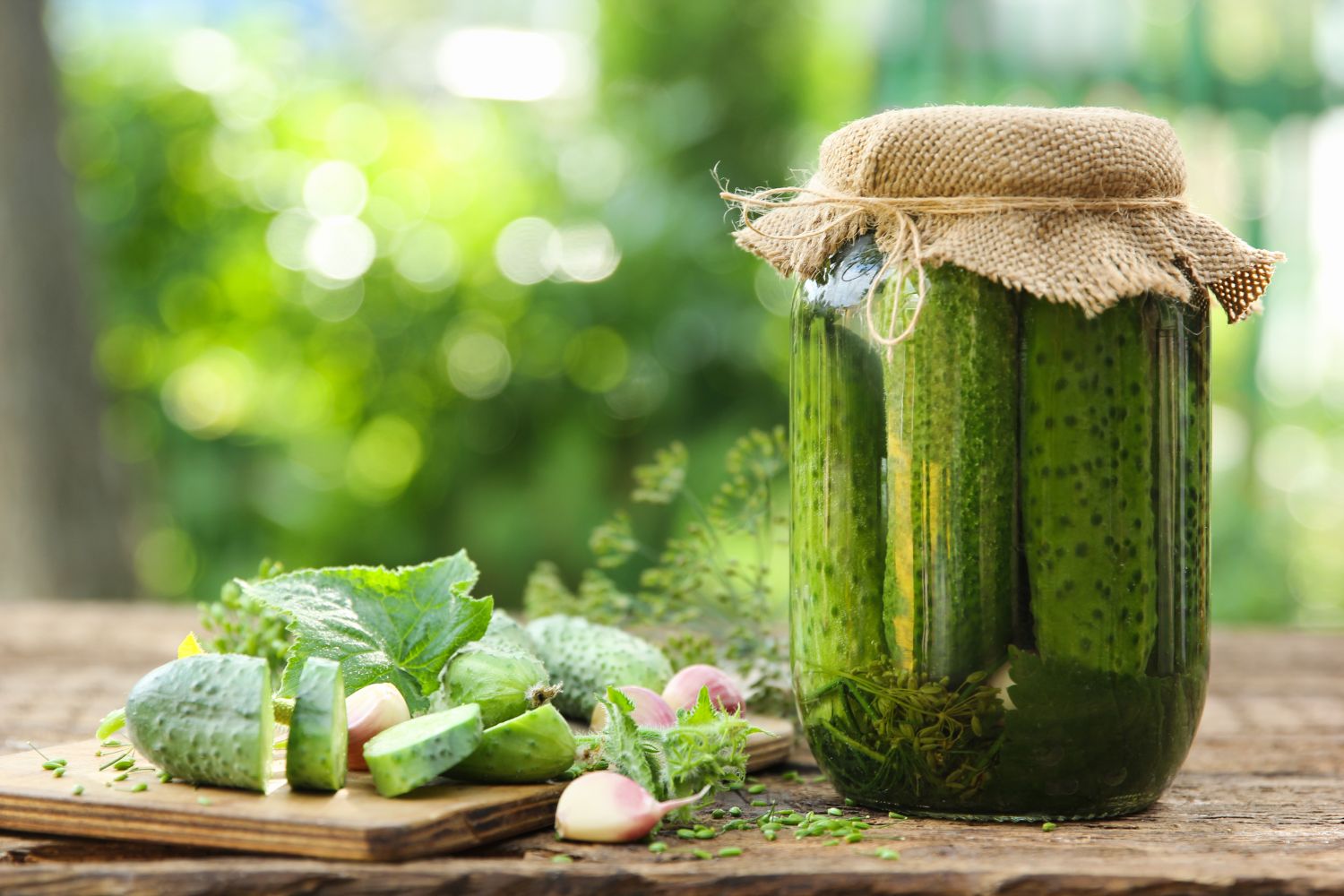

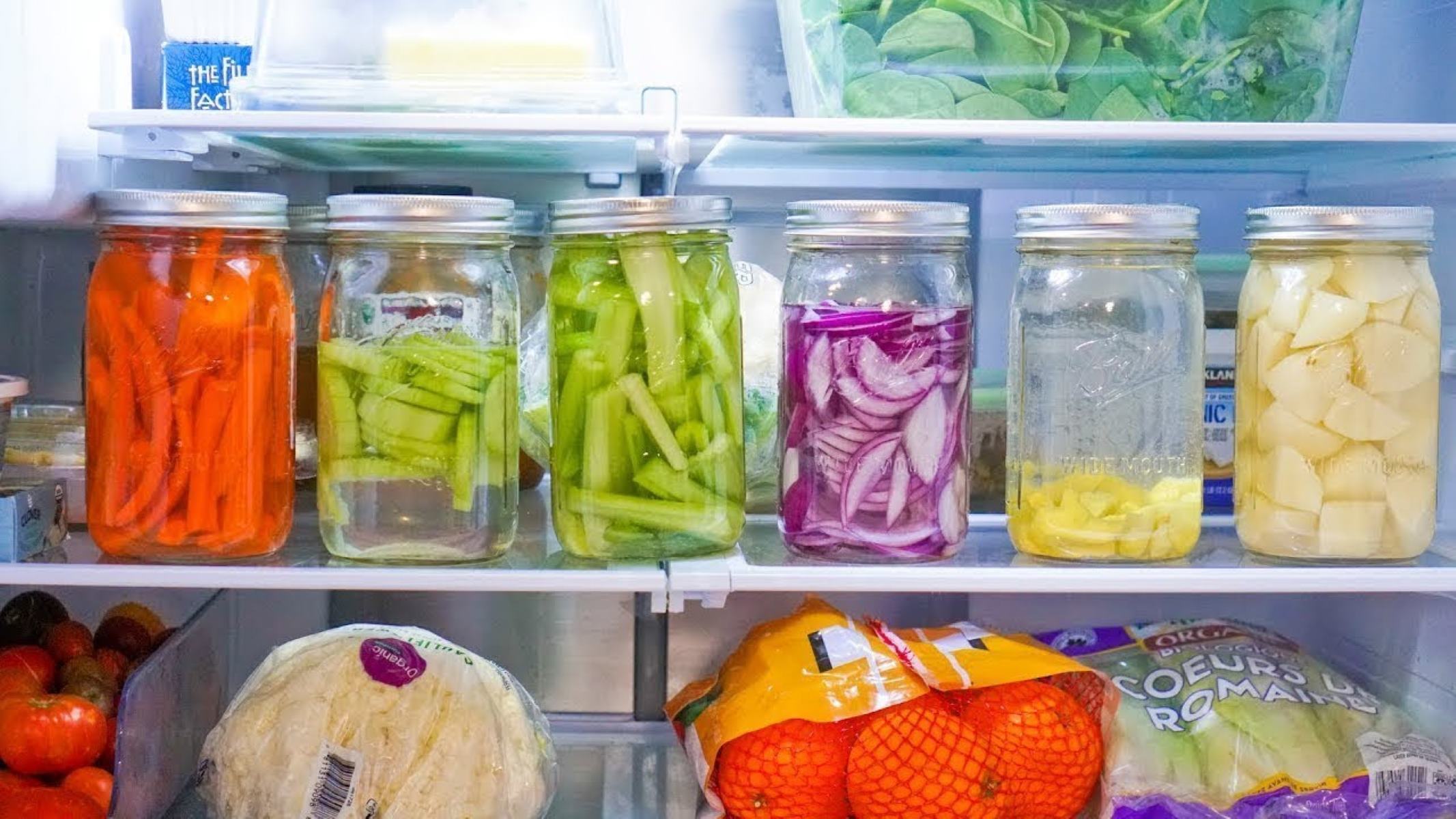
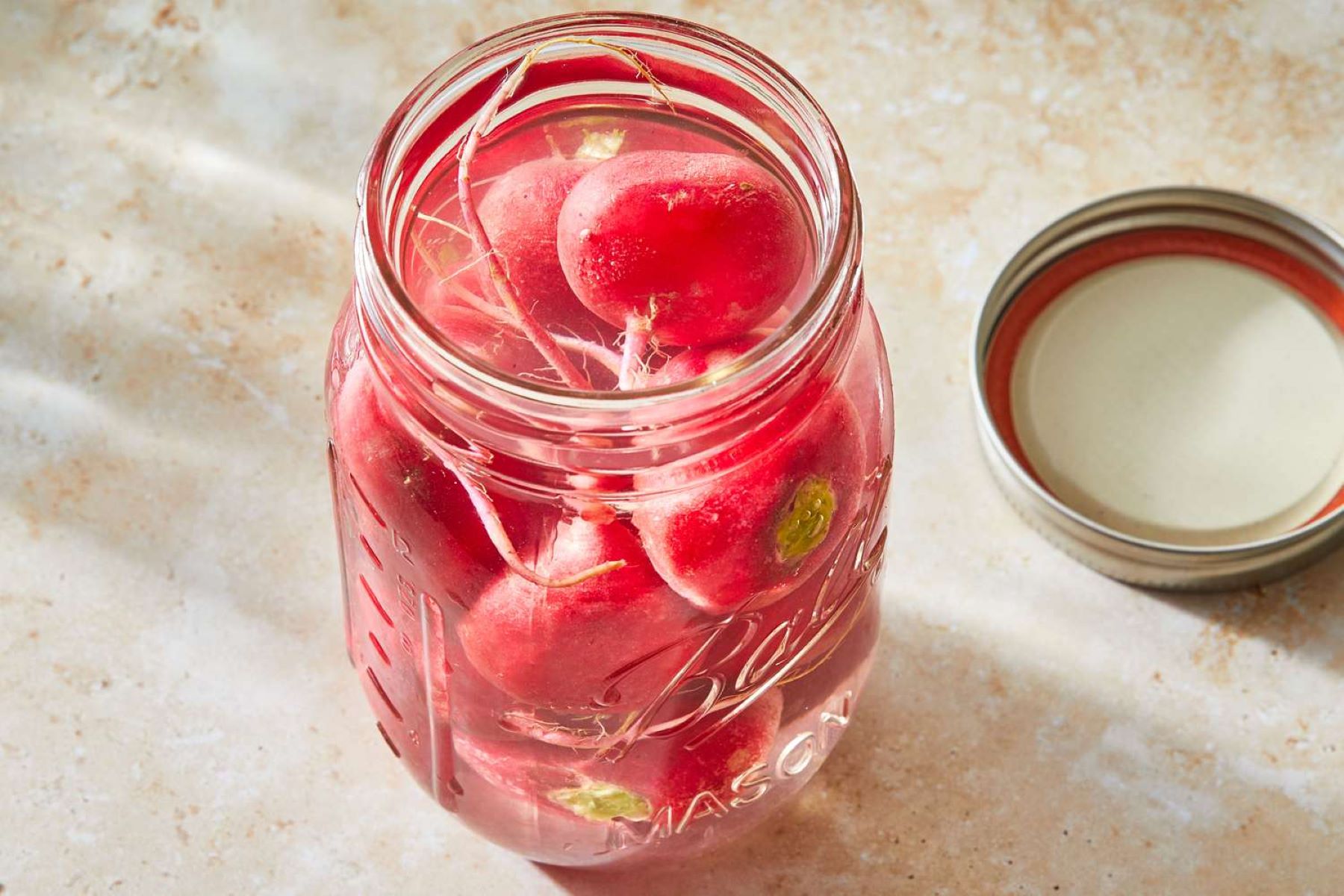
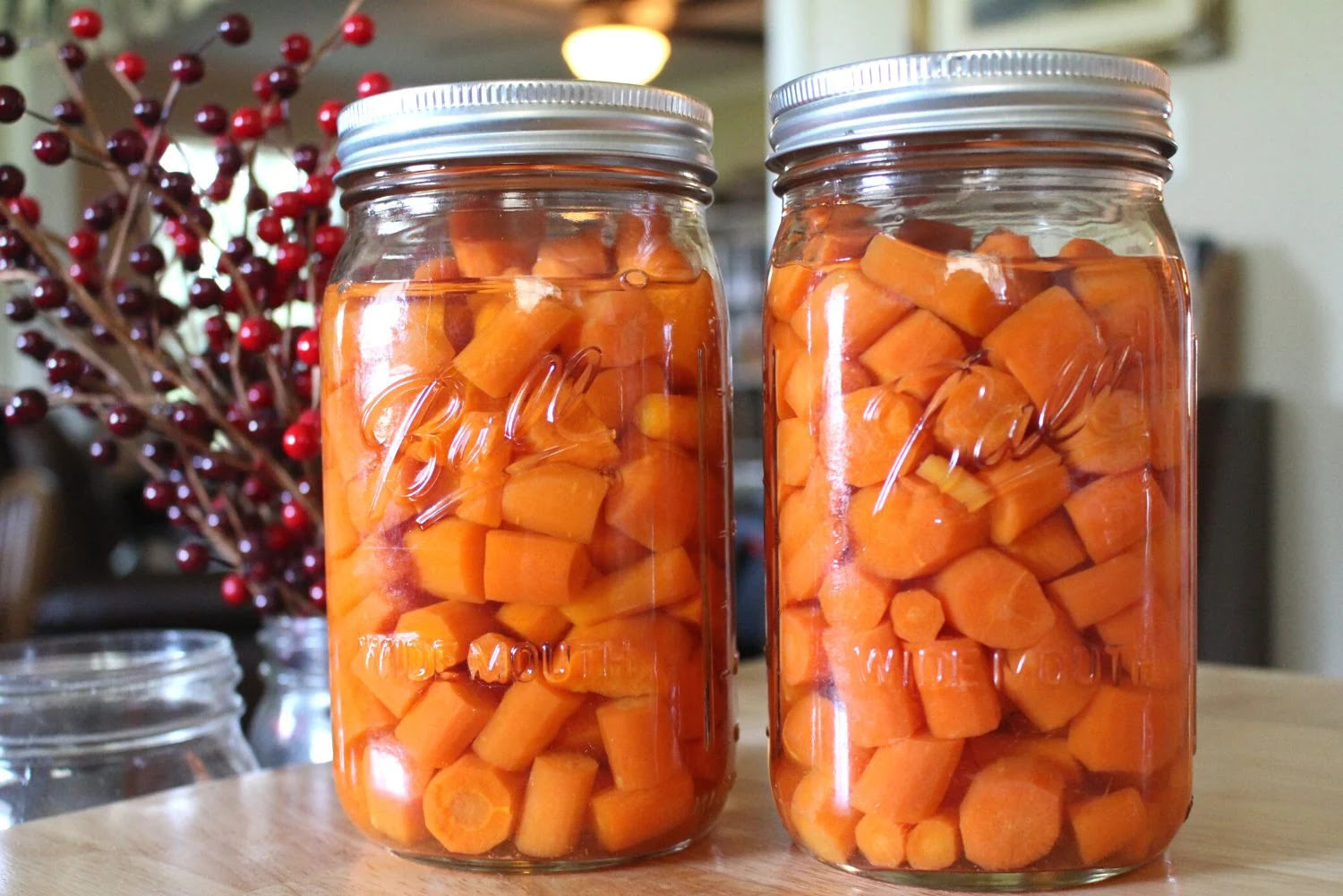
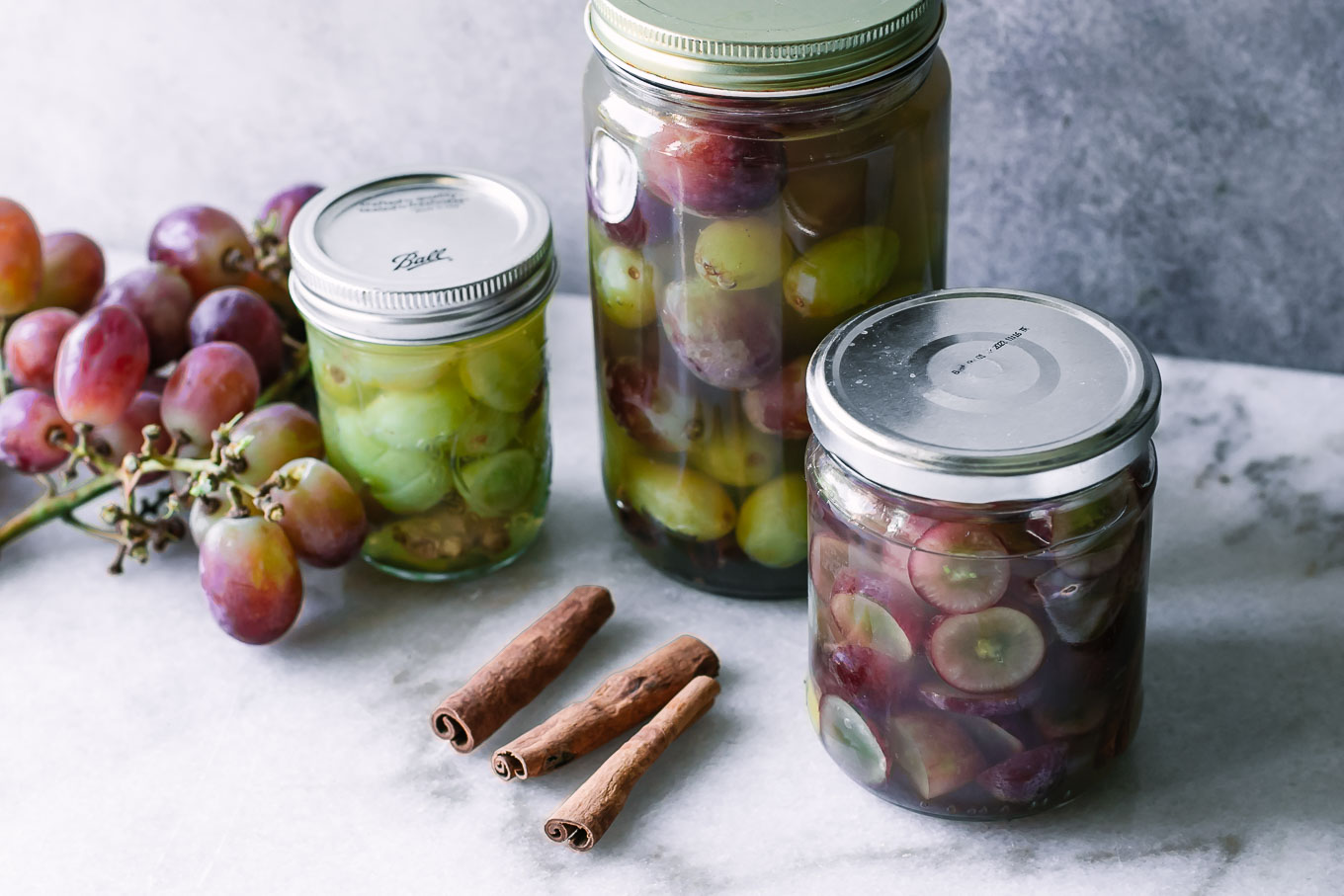
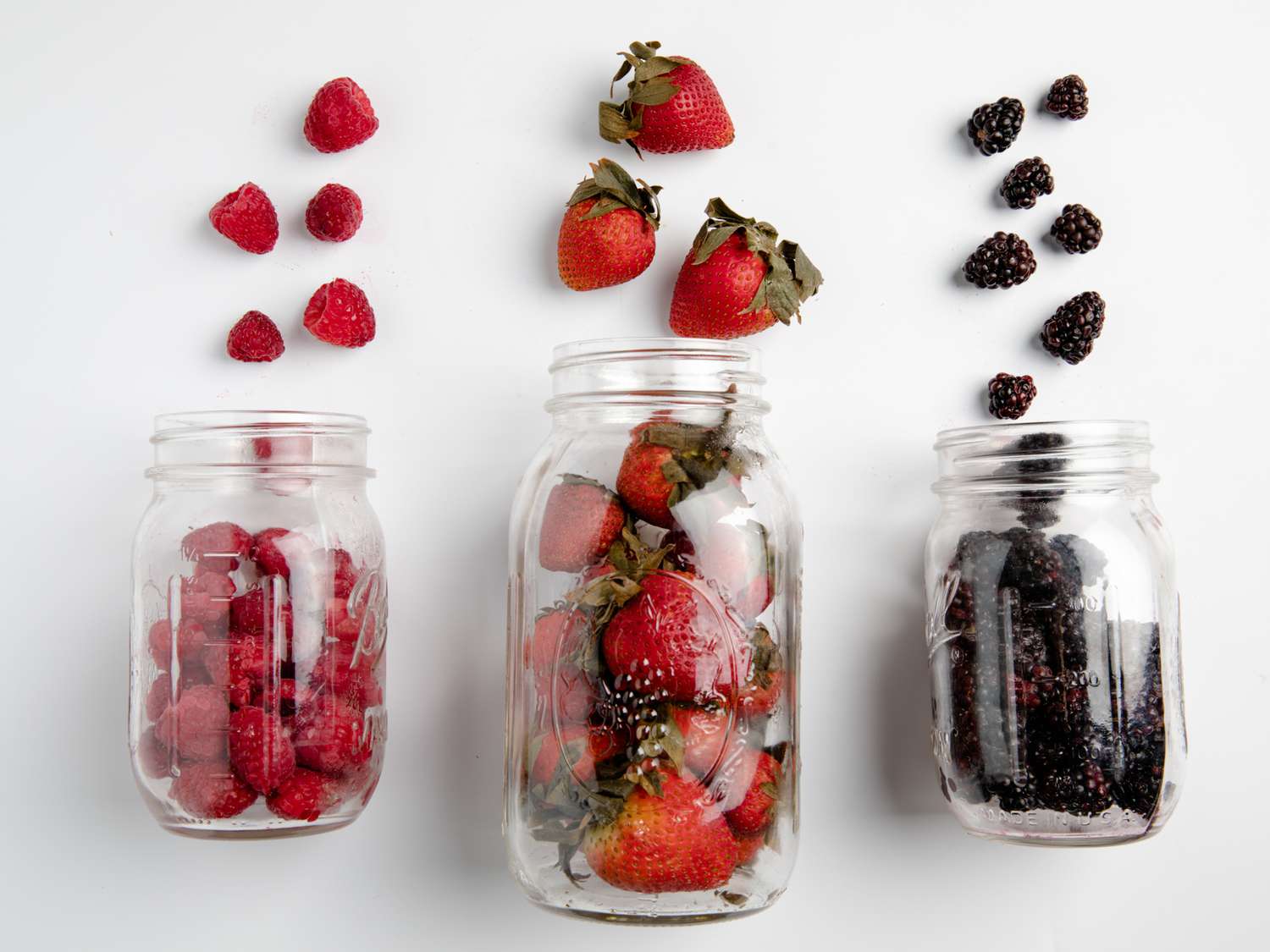
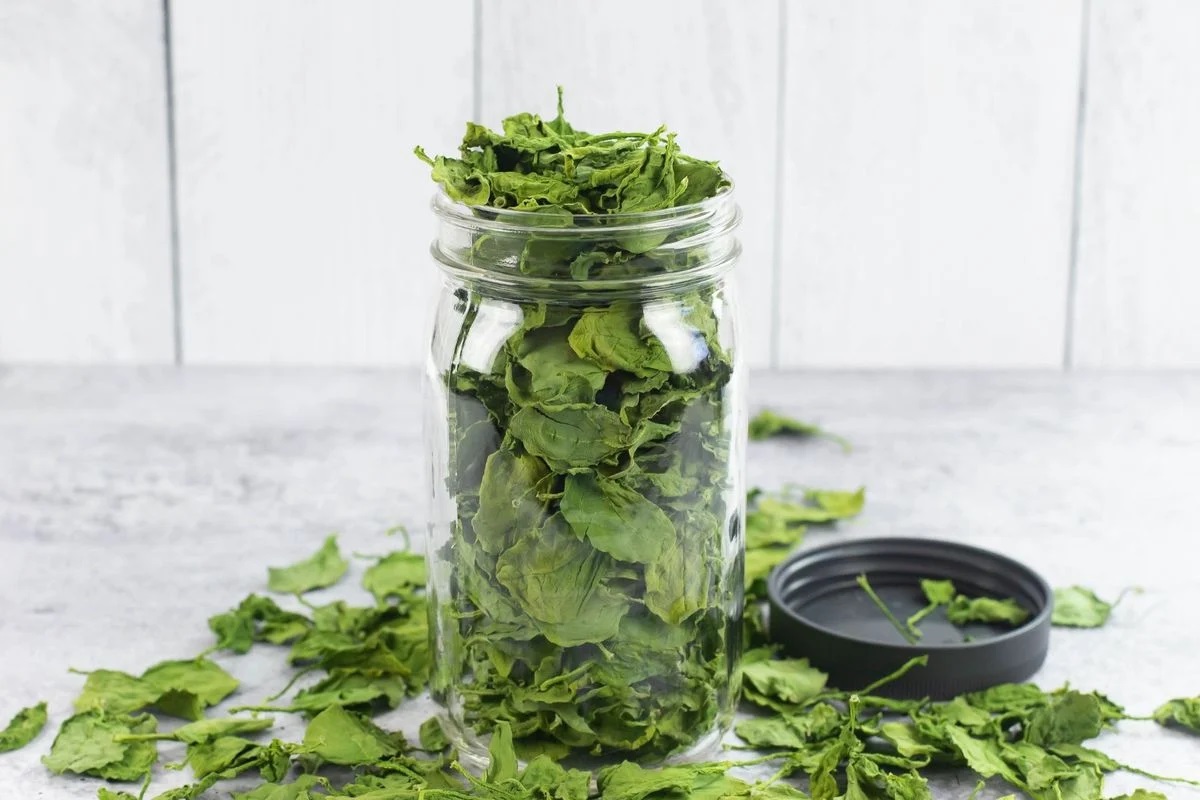
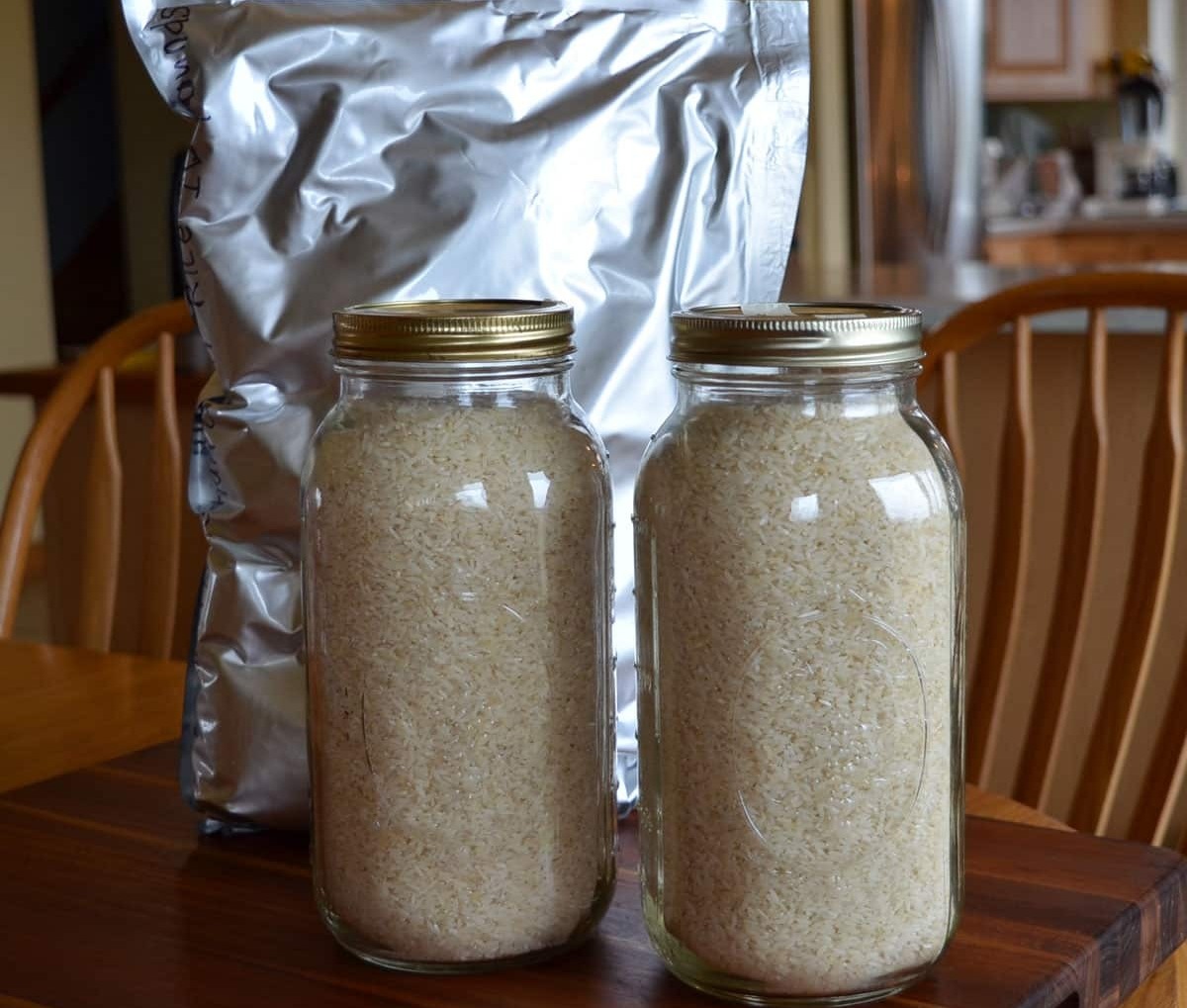
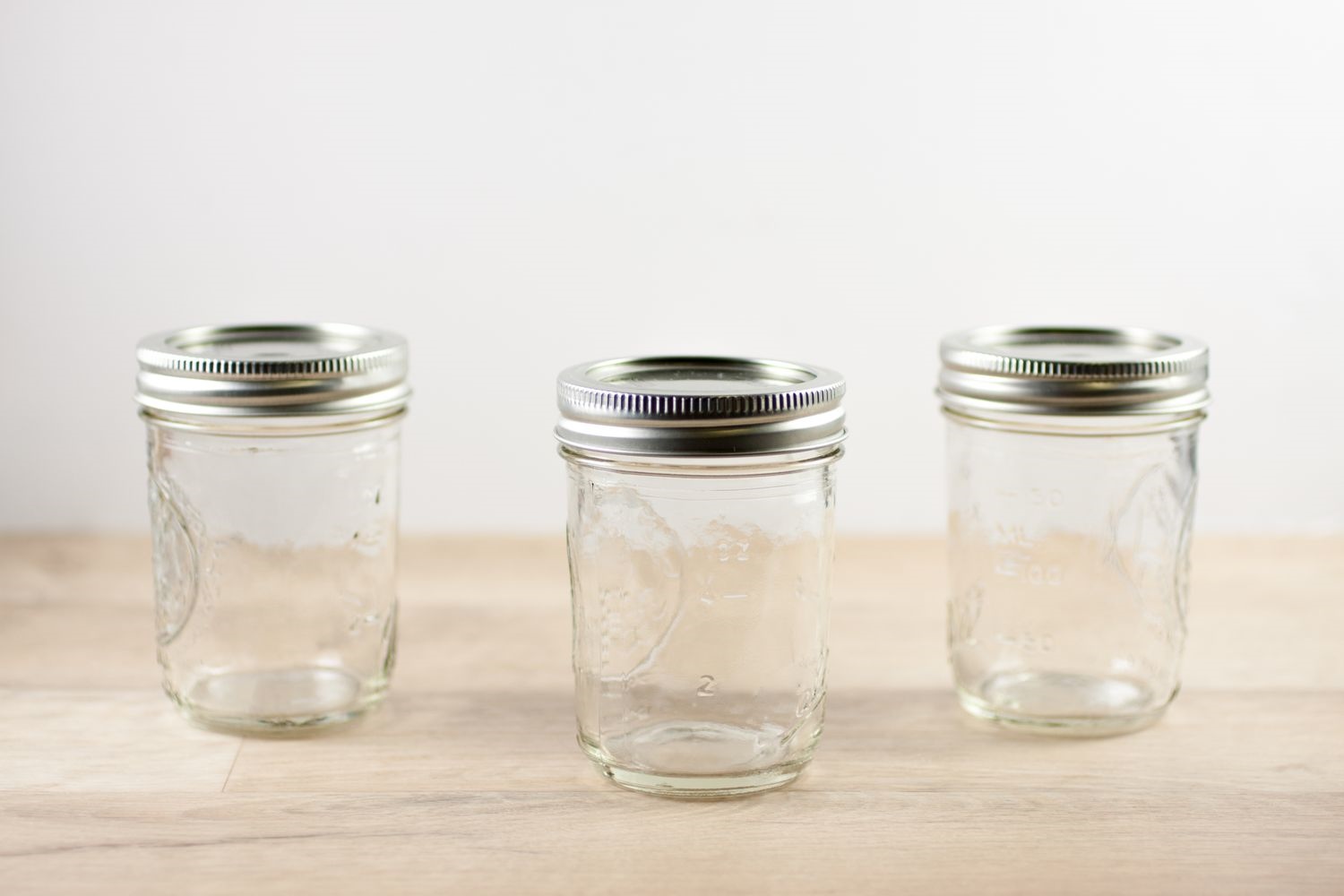
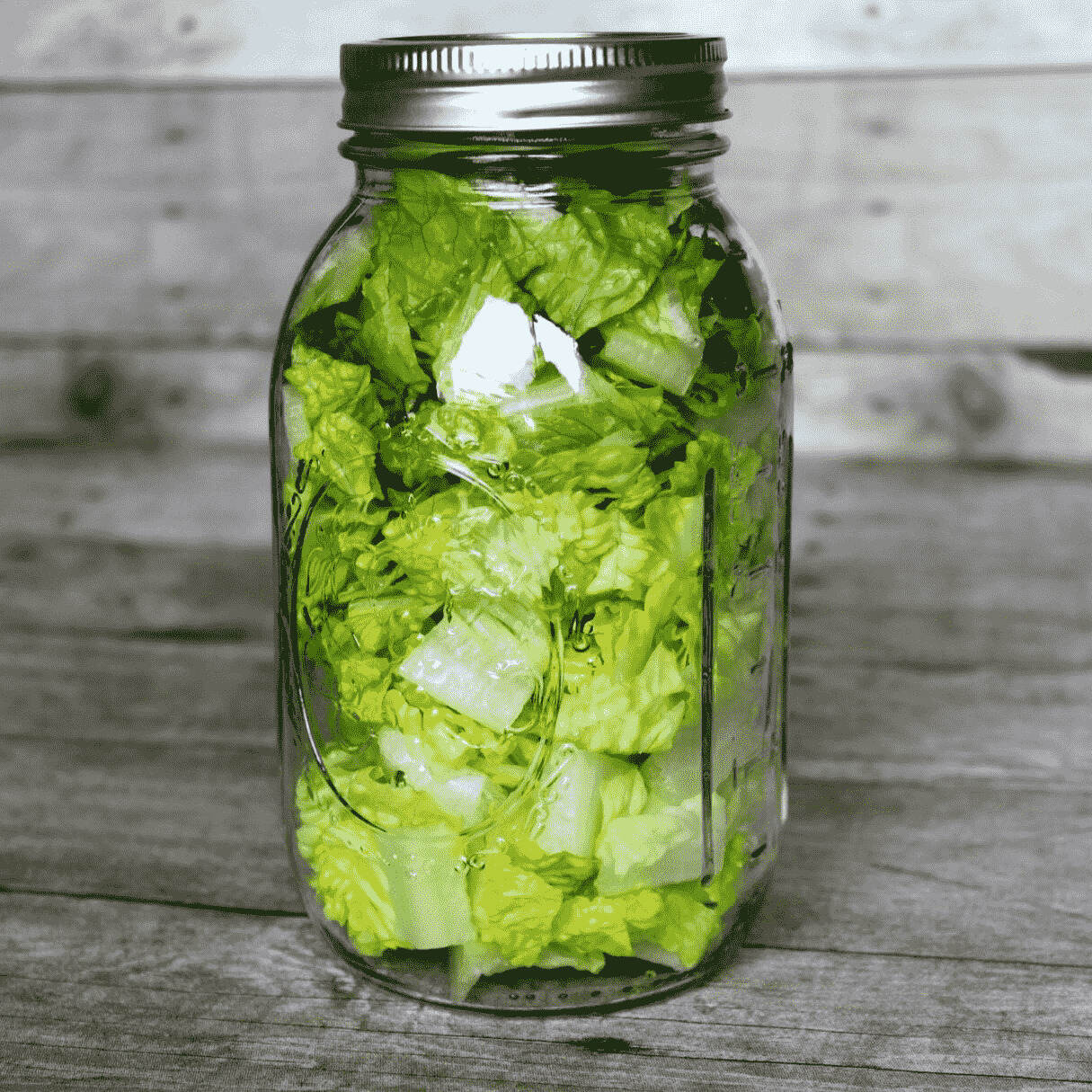
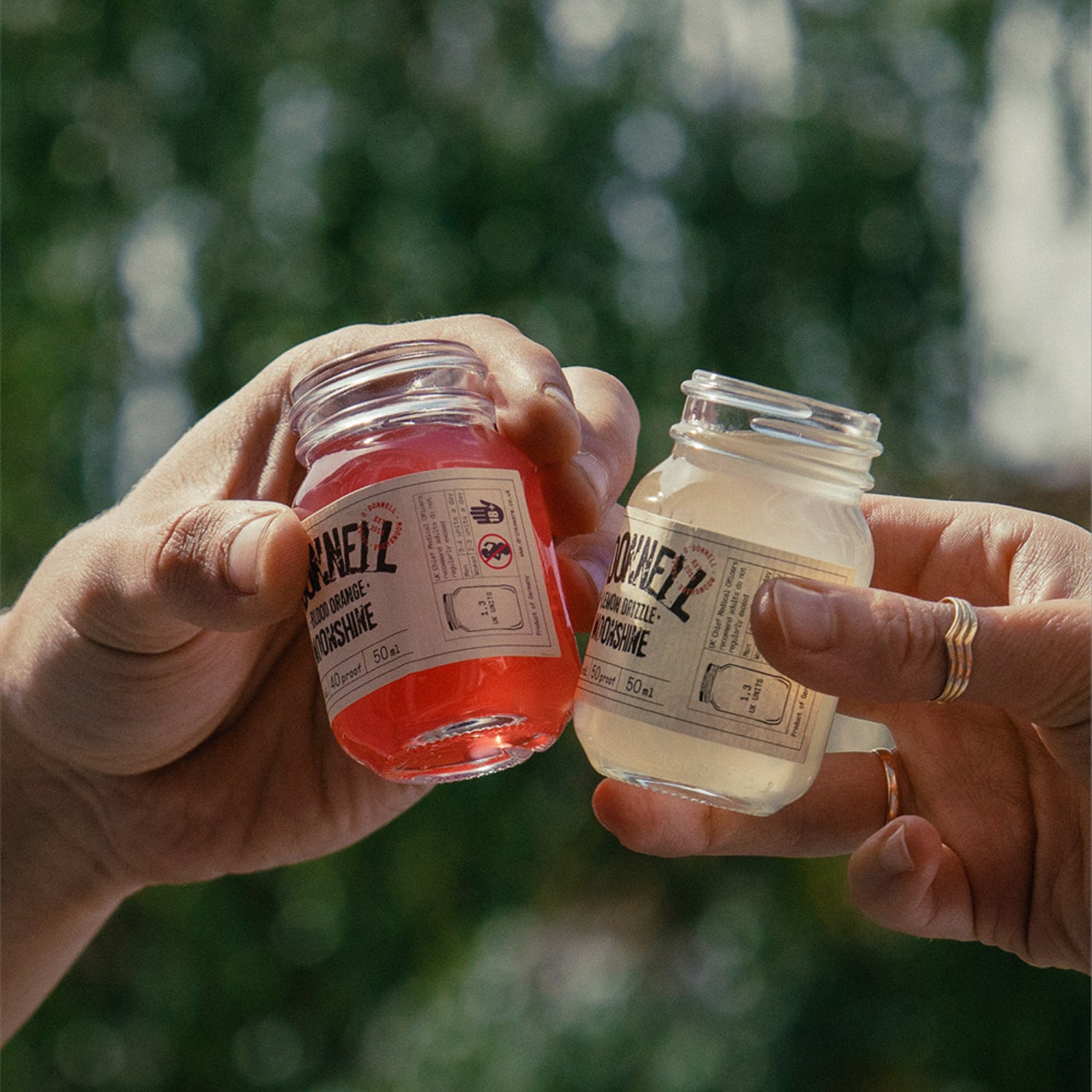
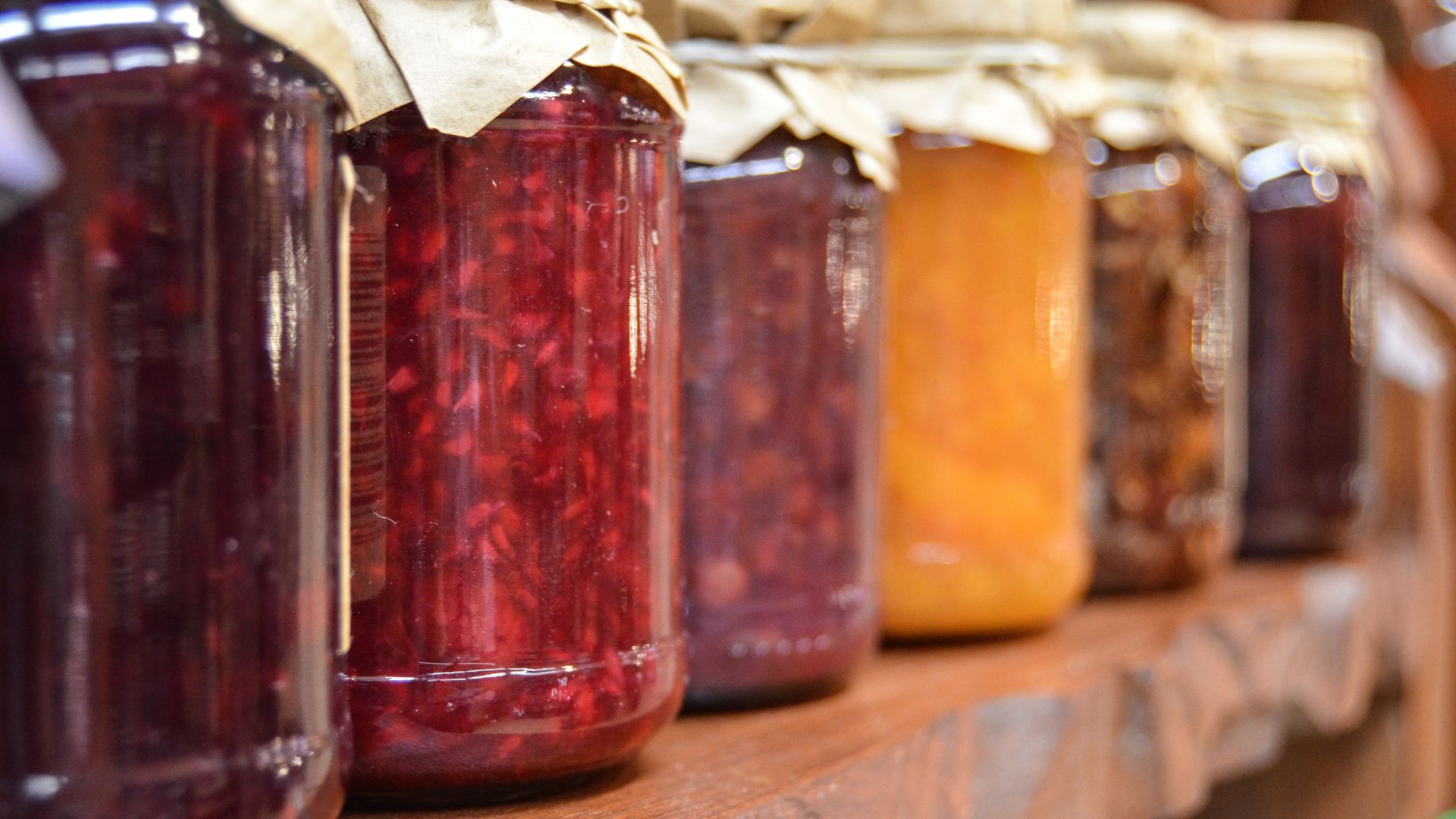

0 thoughts on “How To Store Broccoli In Mason Jars”